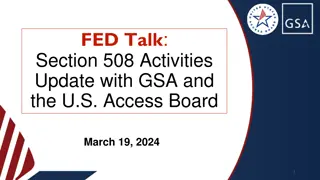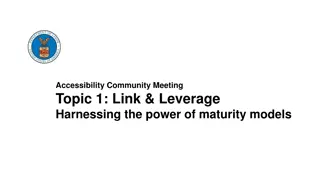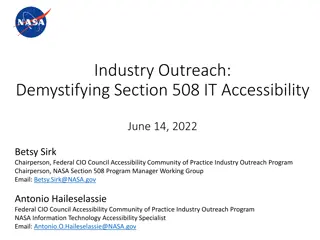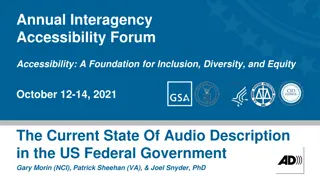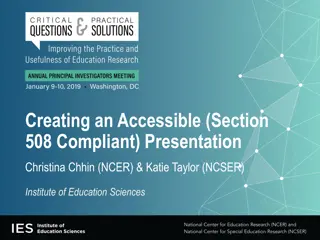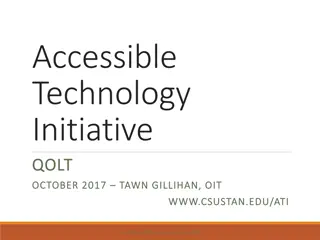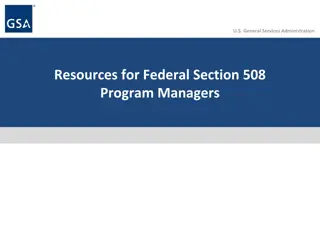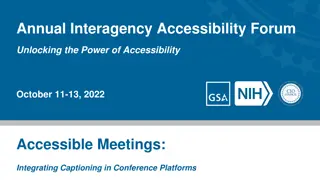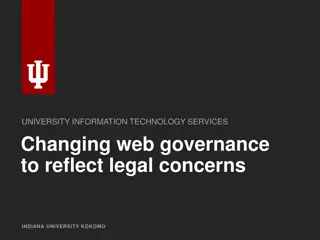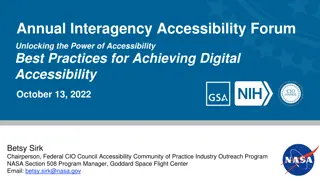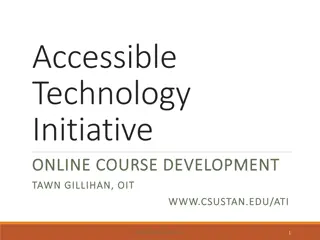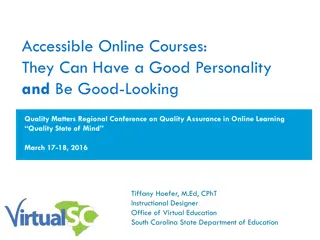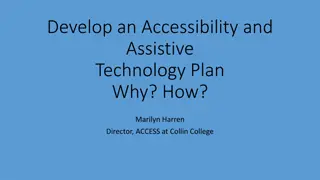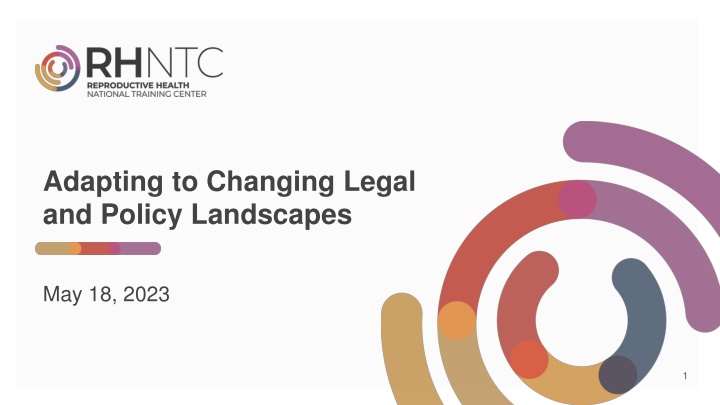
Navigating Legal Risk Management for Title X Projects
Explore legal risk management strategies for Title X projects, understanding legal risks, categories, and strategies for incorporation. Discover the importance of adaptive leadership and effective communication in supporting family planning services amid policy changes.
Download Presentation

Please find below an Image/Link to download the presentation.
The content on the website is provided AS IS for your information and personal use only. It may not be sold, licensed, or shared on other websites without obtaining consent from the author. If you encounter any issues during the download, it is possible that the publisher has removed the file from their server.
You are allowed to download the files provided on this website for personal or commercial use, subject to the condition that they are used lawfully. All files are the property of their respective owners.
The content on the website is provided AS IS for your information and personal use only. It may not be sold, licensed, or shared on other websites without obtaining consent from the author.
E N D
Presentation Transcript
Adapting to Changing Legal and Policy Landscapes May 18, 2023 1
Facilitator Kami Geoffray, JD, President, Geoffray Strategies 2
Learning Objectives By the end of the session, participants will be able to: Identify the fundamentals of legal risk management Understand the importance of adopting a risk management framework to support family planning services amid policy changes Identify adaptive leadership strategies and tools Understand the importance of relationship management and effective communication to support family planning services amid policy changes
Session Overview During this session, we will: Review common legal and risk management considerations Learn how other grantees are adapting to legal and policy challenges Identify strategies for the future, including adaptive leadership practices Share tailored resources Nothing in this session is intended as legal advice, and legal advice will not be provided during this session.
Legal risk management: What is it and how can we incorporate it into our Title X projects?
Legal Risk Defined Legal risk is considered a subset of operational risk There are four broad categories of legal risk: Contractual: the possibility that an organization will face losses as a result of failing to comply with the terms of a contract Litigation: the possibility that legal action will be taken because of an organization s action, inaction, services, or other events Regulatory: the possibility that a change in laws or regulations will impact an organization or industry Structural: broad risks that result from uncertainty in an industry
Legal Risk Management Encourages organizations to think ahead and navigate change strategically No one right way to do this work Will be unique to your organization Things to consider: Your organization s structure, resources, and skills Your organization s approach to compliance Scope (i.e., organization-wide, specific division or project) 7
Legal Risk Management: Key Questions How does your organization define legal risk? What structure and skills will you need to manage legal risk? Who will be primarily responsible for legal risk management? How will you monitor and report legal risk? How will you interact with regulators around legal risk management?
Deloittes Legal Risk Management Framework Monitor & Report Identify Assess Control Understand your risk universe Define your legal risk Ensure clear ownership for risks (e.g., legal vs. compliance) Develop a process to assess the level of exposure against agreed upon factors (e.g., regulatory, financial, reputational, customer) Set risk thresholds for each legal risk area Develop a process that helps you stay within your risk threshold Determine when to escalate for legal advice May include policies and training that help balance proactive and reactive responses Develop a process for assessing effectiveness of controls Report to relevant governing bodies
An Example from the Field Arizona has statutes regulating abortion that date back to 1864 Affirm, the statewide Title X grantee, sought to understand the impact of these laws on its Title X project Worked with the RHNTC and their own legal counsel to crosswalk federal and state laws, regulations, and guidance Shared guidance with Arizona Family Health Partnership governing body and delegates that assessed the potential impacts and risks
Discussion Prompts What are 1-2 legal risks that your organization is monitoring or plans to monitor after this discussion? Recall that these can be contractual, litigation, regulatory, or structural Legal risk management is a continuum. How would you describe your organization s approach to legal risk management? E.g., none, some, formalized What resources does your organization need to develop or improve upon its legal risk management processes?
Managing change: How can we use the adaptive leadership framework to navigate the current policy environment?
Using the Adaptive Leadership Framework 1 Adaptive leadership is the ability to manage change effectively and to thrive in complex and uncertain environments Building adaptive leadership capacity can help your organization respond to changing needs and priorities The RHNTC s Adaptive Leadership for Tackling Complex Problems Toolkit provides a framework
Using the Adaptive Leadership Framework 2 Assess the root cause of the challenge Gain agreement on and address the actual (not superficial) root causes Diagnose the challenge as technical, adaptive, or both Technical challenges have clear, identifiable, agreed-upon solutions Adaptive challenges lack agreement or certainty about the problem or course of action Use a team-based approach to address an adaptive challenge Utilize systems thinking and engage stakeholders in problem-solving
Mapping Systems and Actors System and actor maps can help your organization: Frame the system Identify key actors Understand relationships and connections Navigate complex policy issues In preparation for policy challenges
Stakeholder Mapping Tool The RHNTC s Stakeholder Mapping Tool can help you: Generate information about stakeholders Better understand their interests Assess their influence Consider using this tool when you need to: Gain stakeholder buy-in Obtain stakeholder input Build understanding and manage stakeholder expectations
Activity Description Imagine that your organization is preparing to navigate a complex policy issue that will impact your Title X project Think about how you will engage various stakeholders (e.g., Title X subrecipients, policymakers, media) to ensure your key messages are understood and amplified In your small groups, discuss how you might use the Stakeholder Mapping Tool to support and improve stakeholder engagement
Key Takeaways The RHNTC offers resources and TA to help you navigate the current policy environment Now is the time to assess your organization s risk universe and define legal risk for your organization and Title X project Use system and actor mapping to manage stakeholder relationships and engagement
rhntc.org THANK YOU! CONTACT US rhntc@jsi.com This webinar was supported by the Office of Population Affairs (Grants FPTPA006030, TPSAH000006). The views expressed do not necessarily reflect the official policies of the Department of Health and Human Services; nor does mention of trade names, commercial practices, or organizations imply endorsement by the U.S. Government.


